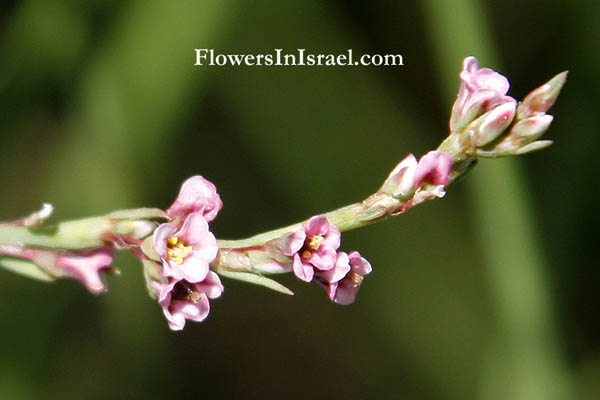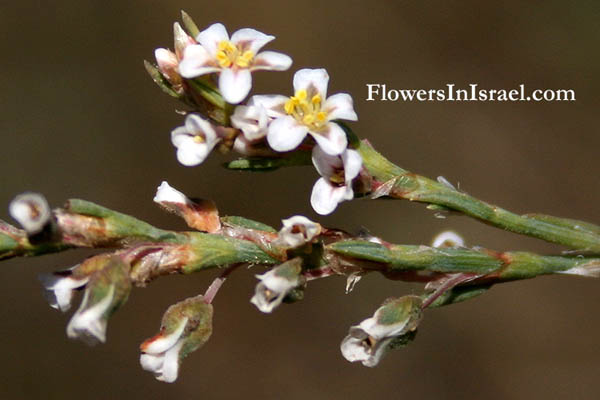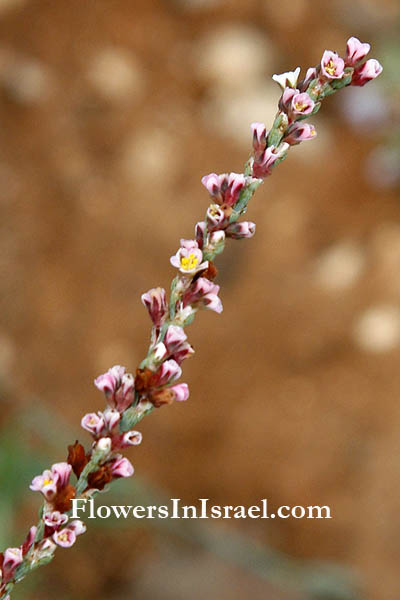Hebrew: ארכובית שבטבטית, Arabic: قضاب, Egypt: قرضاب "Qordab"
| Scientific name: | Polygonum equisetiforme Sm. | |
| Common name: | Horsetail Knotweed | |
| Hebrew name: | ארכובית שבטבטית | |
| Arabic name: | قضاب | |
| Egypt: | قرضاب "Qordab" | |
| Family: | Polygonaceae, ארכוביתיים |

|
| Life form: | Hemicryptophyte | |
| Stems: | 30-100 cm; procumbent or ascending, numerous, branched | |
| Leaves: | Alternate, oblong to linear, acute, wrinkled margins entire | |
| Inflorescence: | Axillary clusters of 2-3, forming long, usually lax, terminal spikes; herbaceous bracts | |
| Flowers: | Pink, white, 2 - 4 mm in diameter; perianth with 5 partly fused tepals; 8 stamens, white filament, yellow anther; 2-3 styles | |
| Fruits / pods: | Achenes, blackish, glossy, 2-5 mm | |
| Flowering Period: | The whole year | |
| Habitat: | Batha, Phrygana | |
| Distribution: | Mediterranean Woodlands and Shrublands, Semi-steppe shrublands, Shrub-steppes, Deserts and extreme deserts, Montane vegetation of Mt. Hermon | |
| Chorotype: | Med - Irano-Turanian | |
| Summer shedding: | Perennating |

Derivation of the botanical name: Polygonum, polys, πολυϛ, πολλη, πολυ, much, many, frequent; large; heavy; gonu, a knee-joint; from the many joints in the stem. equisetiforme, equus, a horse; seta, a bristle; Horsetail form. The Hebrew name: ארכובית, arcuvit, formed from ארכבה, arcuva (Post Biblical Hebrew: knee, knee joint) with suffix -it. Biblical Hebrew: ברך, bereh, knee.


Location: Bene Zion Nature Reserve |